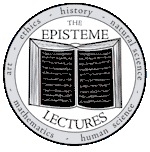WHICH CHILD EATS WHICH CHILD DIES and HUNGER AMONG U.S. CHILDREN. I find the argument "even if we feed a few people the problem is going to exist, so we can't really do anything about hunger" to be exceptionally flawed. In addition to the large-scale solutions suggested by the article, I think another solution could stem from the idea that "2008 was a record year in terms of harvest. There's more food per person in 2008 than there's ever been in history. The problem is not food, but how we distribute it." It would take some innovation and will to solve the distribution problem, but it's not impossible. Hunger as a problem could be battled, not even taking into account the idea that helping individuals is as important--to those individuals--as trying to solve the overarching problem itself.
ART OR FOOD. I don't think it's useful to argue whether or not the $14 million should have come from taxpayer money to go to this ceiling; the representatives believed it was necessary, and it was effectually their call. The only aspect of the debate I can plausibly argue is that $1 million of that money was earmarked for African aid. Ethics aside, just looking at this from a governmental perspective, it seems quite clear to me that this ceiling does not constitute African aide. I suppose meetings held in the room may deal with human rights in Africa or something to that effect but really... when that $1 million were approved, I'm sure the intent was understood that the money would go to Africa. Not art. Throw back in ethics, and this expenditure is absurd. I have a hard time believing they could not find at least $1 million-worth more of private donors to fund the art.
Subscribe to:
Post Comments (Atom)



No comments:
Post a Comment